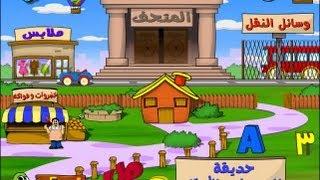very very funny video Ancient Greece
Western humour theory begins with Plato, who attributed to Socrates (as a semihistorical dialogue character) in
the Philebus (p. 49b) the view that the essence of the ridiculous is an ignorance in the weak, who are thus unable
to retaliate when ridiculed. Later, in Greek philosophy, Aristotle, in the Poetics (1449a, pp. 34--35), suggested
that an ugliness that does not disgust is fundamental to humour.
India
very, funny, video, cool, fun, ever, best, worst, greatest, youtube, worlds, had, thing, biggest, world's,
best ever, first ever, wanted, fastest
In ancient Sanskrit drama, Bharata Muni's Natya Shastra defined humour (hasyam) as one of the nine nava rasas, or
principle rasas (emotional responses), which can be inspired in the audience by bhavas, the imitations of emotions
that the actors perform. Each rasa was associated with a specific bhavas portrayed on stage. In the case of
humour, it was associated with mirth (hasya).
Arabia
The terms "comedy" and "satire" became synonymous after Aristotle's Poetics was translated into Arabic in the
medieval Islamic world, where it was elaborated upon by Arabic writers and Islamic philosophers such as Abu
Bischr, his pupil Al-Farabi, Avicenna, and Averroes. Due to cultural differences, they disassociated comedy from
Greek dramatic representation, and instead identified it with Arabic poetic themes and forms, such as hija
(satirical poetry). They viewed comedy as simply the "art of reprehension" and made no reference to light and
cheerful events or troublous beginnings and happy endings associated with classical Greek comedy. After the Latin
translations of the 12th century, the term "comedy" thus gained a new semantic meaning in Medieval literature.[5]
Incongruity theory
The Incongruity Theory originated mostly with Kant, who claimed that the comic is an expectation that comes to
nothing. Henri Bergson attempted to perfect incongruity by reducing it to the "living" and "mechanical".[6]
An incongruity like Bergson's, in things juxtaposed simultaneously, is still in vogue. This is often debated
against theories of the shifts in perspectives in humour; hence, the debate in the series Humor Research between
John Morreall and Robert Latta.[7] Morreall presented mostly simultaneous juxtapositions,[8] with Latta countering
that it requires a "cognitive shift" created by a discovery or solution to a puzzle or problem. Latta is
criticised for having reduced jokes' essence to their own puzzling aspect.
Humour frequently contains an unexpected, often sudden, shift in perspective, which gets assimilated by the
Incongruity Theory. This view has been defended by Latta (1998) and by Brian Boyd (2004).[9] Boyd views the shift
as from seriousness to play. Nearly anything can be the object of this perspective twist; it is, however, in the
areas of human creativity (science and art being the varieties) that the shift results from "structure mapping"
(termed "bisociation" by Koestler) to create novel meanings.[10] Arthur Koestler argues that humour results when
two different frames of reference are set up and a collision is engineered between them.
Metaphor and metonymy
Tony Veale, who takes a more formalised computational approach than Koestler, has written on the role of metaphor
and metonymy in humour,[11][12][13] using inspiration from Koestler as well as from Dedre Gentner's theory of
structure-mapping, George Lakoff and Mark Johnson's theory of conceptual metaphor, and Mark Turner and Gilles
Fauconnier's theory of conceptual blending.
Social demographics
As with any form of art, acceptance depends on social demographics and varies from person to person. Throughout
history, comedy has been used as a form of entertainment all over the world, whether in the courts of the Western
kings or the villages of the Far East. Both a social etiquette and a certain intelligence can be displayed through
forms of wit and sarcasm. Eighteenth-century German author Georg Lichtenberg said that "the more you know humour,
the more you become demanding in fineness."
Evolutionary explanation of humour
Alastair Clarke explains: "The theory is an evolutionary and cognitive explanation of how and why any individual
finds anything funny. Effectively, it explains that humour occurs when the brain recognises a pattern that
surprises it, and that recognition of this sort is rewarded with the experience of the humorous response, an
element of which is broadcast as laughter." The theory further identifies the importance of pattern recognition in
human evolution: "An ability to recognise patterns instantly and unconsciously has proved a fundamental weapon in
the cognitive arsenal of human beings. The humorous reward has encouraged the development of such faculties,
leading to the unique perceptual and intellectual abilities of our species."[14]
Western humour theory begins with Plato, who attributed to Socrates (as a semihistorical dialogue character) in
the Philebus (p. 49b) the view that the essence of the ridiculous is an ignorance in the weak, who are thus unable
to retaliate when ridiculed. Later, in Greek philosophy, Aristotle, in the Poetics (1449a, pp. 34--35), suggested
that an ugliness that does not disgust is fundamental to humour.
India
very, funny, video, cool, fun, ever, best, worst, greatest, youtube, worlds, had, thing, biggest, world's,
best ever, first ever, wanted, fastest
In ancient Sanskrit drama, Bharata Muni's Natya Shastra defined humour (hasyam) as one of the nine nava rasas, or
principle rasas (emotional responses), which can be inspired in the audience by bhavas, the imitations of emotions
that the actors perform. Each rasa was associated with a specific bhavas portrayed on stage. In the case of
humour, it was associated with mirth (hasya).
Arabia
The terms "comedy" and "satire" became synonymous after Aristotle's Poetics was translated into Arabic in the
medieval Islamic world, where it was elaborated upon by Arabic writers and Islamic philosophers such as Abu
Bischr, his pupil Al-Farabi, Avicenna, and Averroes. Due to cultural differences, they disassociated comedy from
Greek dramatic representation, and instead identified it with Arabic poetic themes and forms, such as hija
(satirical poetry). They viewed comedy as simply the "art of reprehension" and made no reference to light and
cheerful events or troublous beginnings and happy endings associated with classical Greek comedy. After the Latin
translations of the 12th century, the term "comedy" thus gained a new semantic meaning in Medieval literature.[5]
Incongruity theory
The Incongruity Theory originated mostly with Kant, who claimed that the comic is an expectation that comes to
nothing. Henri Bergson attempted to perfect incongruity by reducing it to the "living" and "mechanical".[6]
An incongruity like Bergson's, in things juxtaposed simultaneously, is still in vogue. This is often debated
against theories of the shifts in perspectives in humour; hence, the debate in the series Humor Research between
John Morreall and Robert Latta.[7] Morreall presented mostly simultaneous juxtapositions,[8] with Latta countering
that it requires a "cognitive shift" created by a discovery or solution to a puzzle or problem. Latta is
criticised for having reduced jokes' essence to their own puzzling aspect.
Humour frequently contains an unexpected, often sudden, shift in perspective, which gets assimilated by the
Incongruity Theory. This view has been defended by Latta (1998) and by Brian Boyd (2004).[9] Boyd views the shift
as from seriousness to play. Nearly anything can be the object of this perspective twist; it is, however, in the
areas of human creativity (science and art being the varieties) that the shift results from "structure mapping"
(termed "bisociation" by Koestler) to create novel meanings.[10] Arthur Koestler argues that humour results when
two different frames of reference are set up and a collision is engineered between them.
Metaphor and metonymy
Tony Veale, who takes a more formalised computational approach than Koestler, has written on the role of metaphor
and metonymy in humour,[11][12][13] using inspiration from Koestler as well as from Dedre Gentner's theory of
structure-mapping, George Lakoff and Mark Johnson's theory of conceptual metaphor, and Mark Turner and Gilles
Fauconnier's theory of conceptual blending.
Social demographics
As with any form of art, acceptance depends on social demographics and varies from person to person. Throughout
history, comedy has been used as a form of entertainment all over the world, whether in the courts of the Western
kings or the villages of the Far East. Both a social etiquette and a certain intelligence can be displayed through
forms of wit and sarcasm. Eighteenth-century German author Georg Lichtenberg said that "the more you know humour,
the more you become demanding in fineness."
Evolutionary explanation of humour
Alastair Clarke explains: "The theory is an evolutionary and cognitive explanation of how and why any individual
finds anything funny. Effectively, it explains that humour occurs when the brain recognises a pattern that
surprises it, and that recognition of this sort is rewarded with the experience of the humorous response, an
element of which is broadcast as laughter." The theory further identifies the importance of pattern recognition in
human evolution: "An ability to recognise patterns instantly and unconsciously has proved a fundamental weapon in
the cognitive arsenal of human beings. The humorous reward has encouraged the development of such faculties,
leading to the unique perceptual and intellectual abilities of our species."[14]












Comments